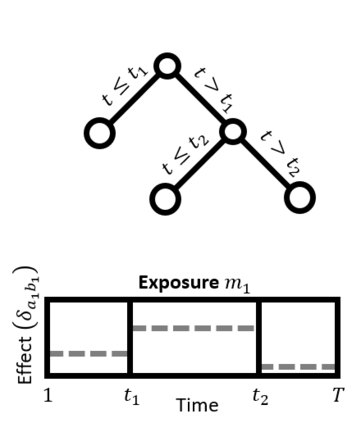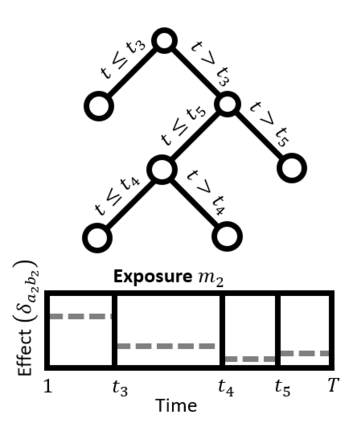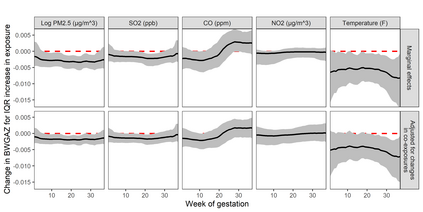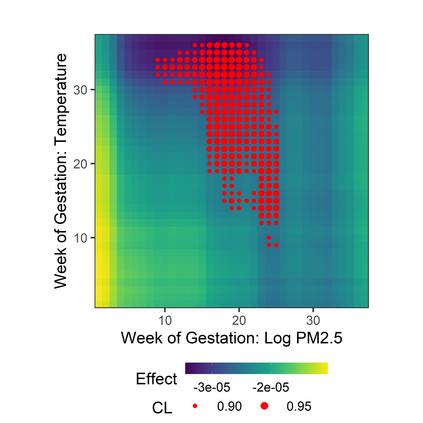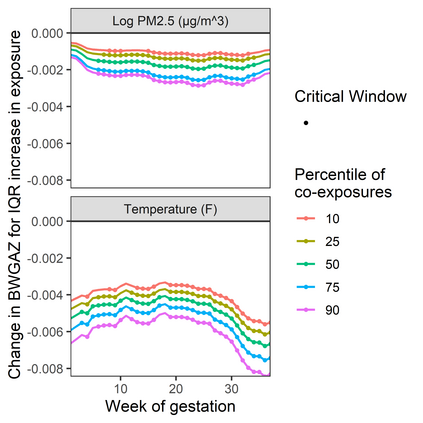Maternal exposure to environmental chemicals during pregnancy can alter birth and children's health outcomes. Research seeks to identify critical windows, time periods when the exposures can change future health outcomes, and estimate the exposure-response relationship. Existing statistical approaches focus on estimation of the association between maternal exposure to a single environmental chemical observed at high-temporal resolution, such as weekly throughout pregnancy, and children's health outcomes. Extending to multiple chemicals observed at high temporal resolution poses a dimensionality problem and statistical methods are lacking. We propose a tree-based model for mixtures of exposures that are observed at high temporal resolution. The proposed approach uses an additive ensemble of structured tree-pairs that define structured main effects and interactions between time-resolved predictors and variable selection to select out of the model predictors not correlated with the outcome. We apply our method in a simulation and the analysis of the relationship between five exposures measured weekly throughout pregnancy and resulting birth weight in a Denver, Colorado birth cohort. We identified critical windows during which fine particulate matter, sulfur dioxide, and temperature are negatively associated with birth weight and an interaction between fine particulate matter and temperature. Software is made available in the R package dlmtree.
翻译:研究旨在确定关键窗口、接触能够改变未来健康结果的时间期限,并估计接触-反应关系; 现有的统计方法侧重于估计产妇接触高时分分辨率观察到的单一环境化学品(如整个怀孕期间每周)与儿童健康结果之间的关联; 将高时分分辨率观测到的多种化学品扩大到多种化学品会产生一个维度问题,而且缺乏统计方法; 我们提议了一个以树为基础的接触混合物模型,在高时分分辨率下观测到。 提议的方法使用结构化树脂添加剂,确定时间溶解预测器和变量选择之间的结构化主要效应和相互作用,从模型预测器中选择与结果无关的模型预测器。 我们采用我们的方法模拟和分析怀孕期间每周测量的五种化学品之间的关系,并在一个康乐罗拉克出生组中测出出生体重。 我们确定了关键窗口,在此期间,微粒物质、二氧化硫化合物和温度与出生体重和微粒质颗粒物质与温度之间的相互作用有负联系。

